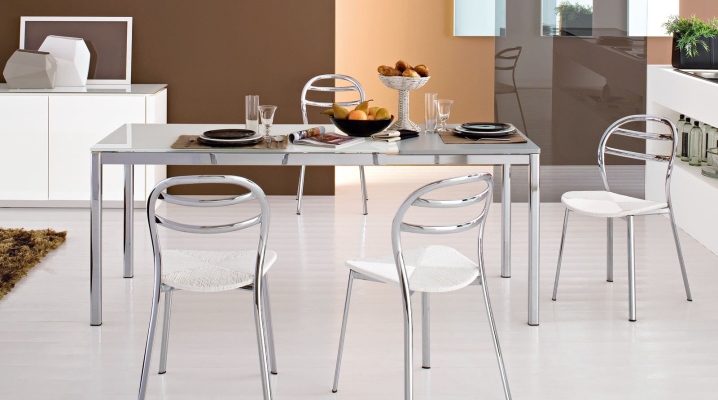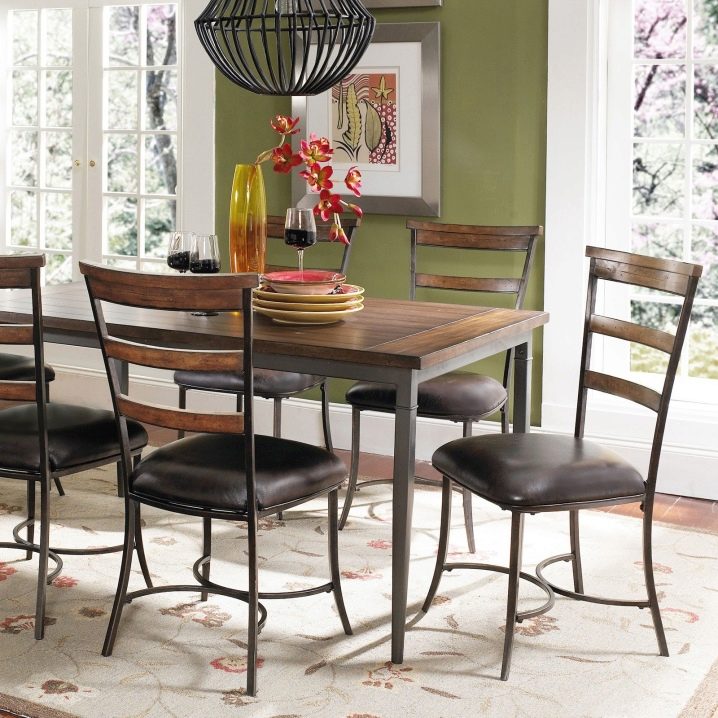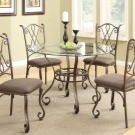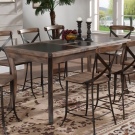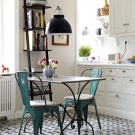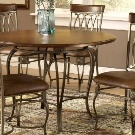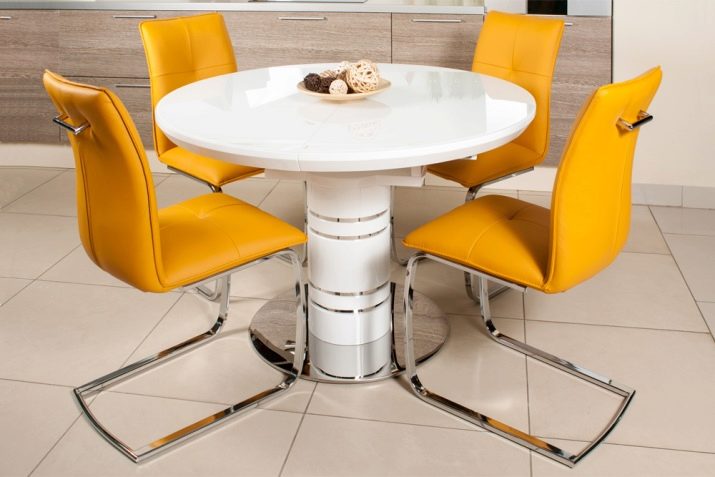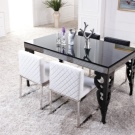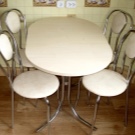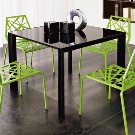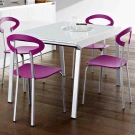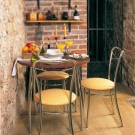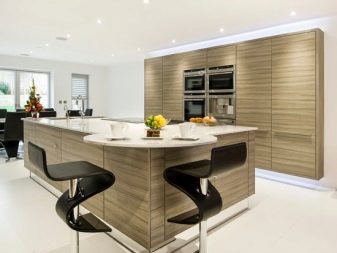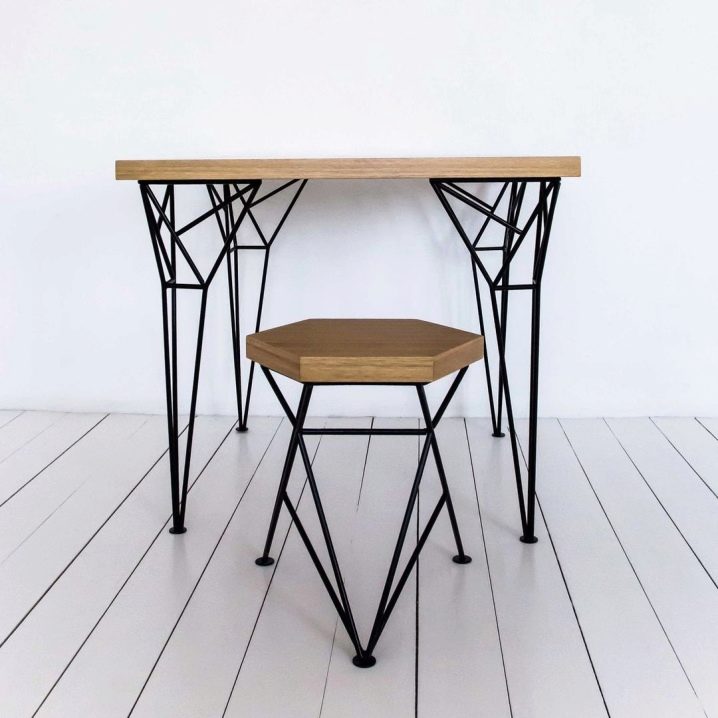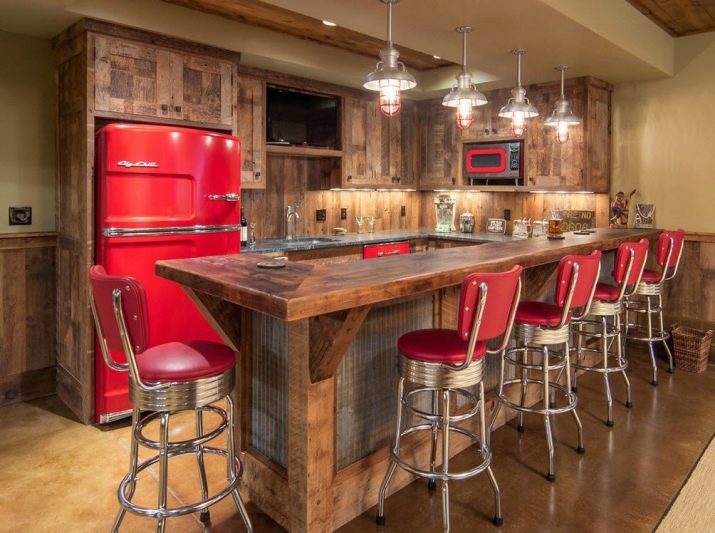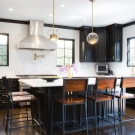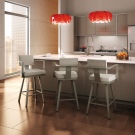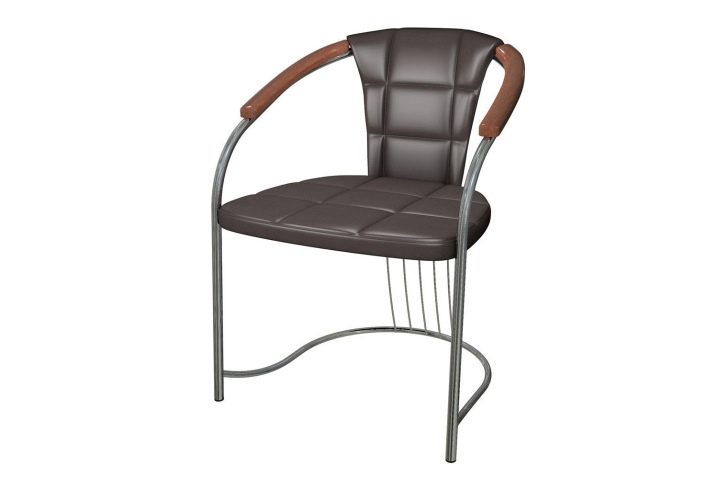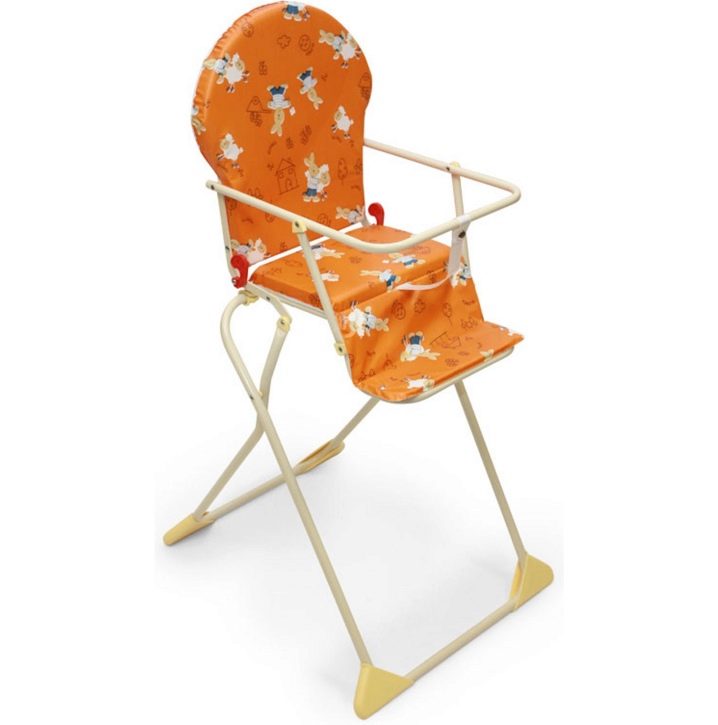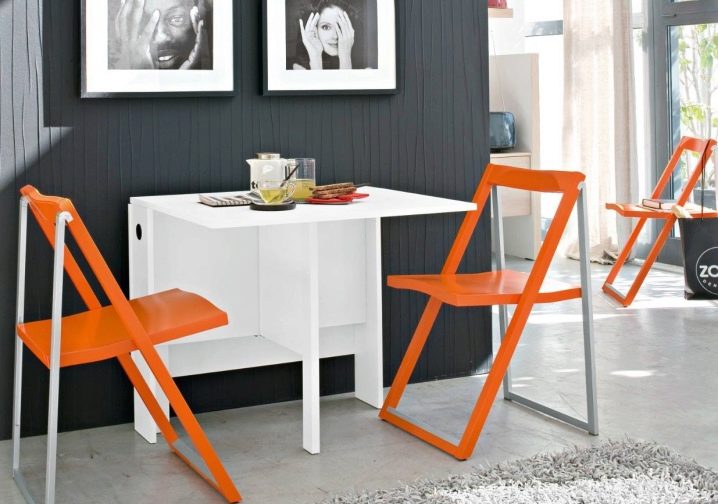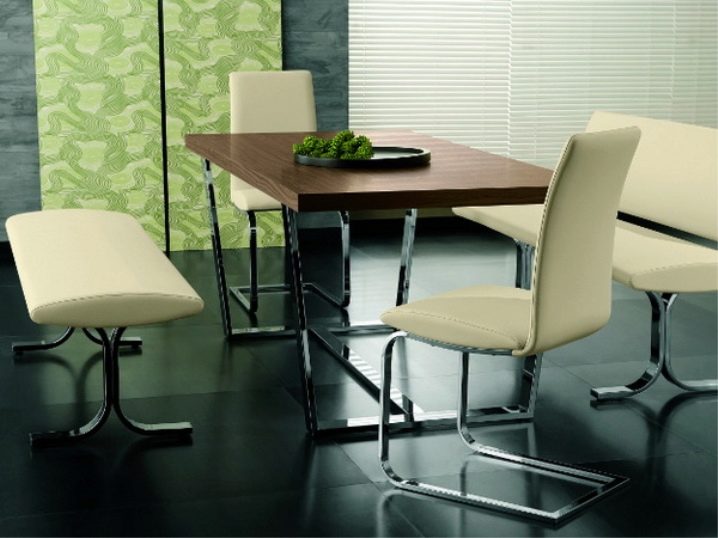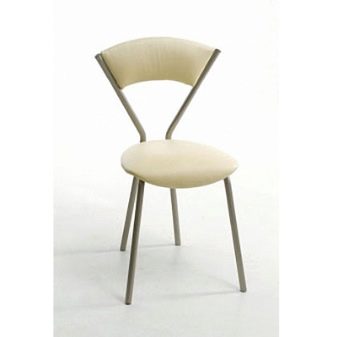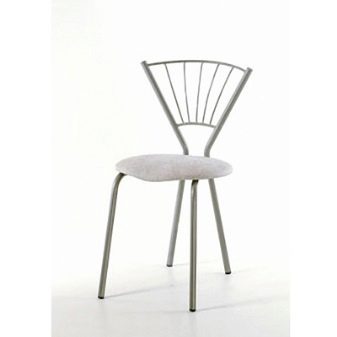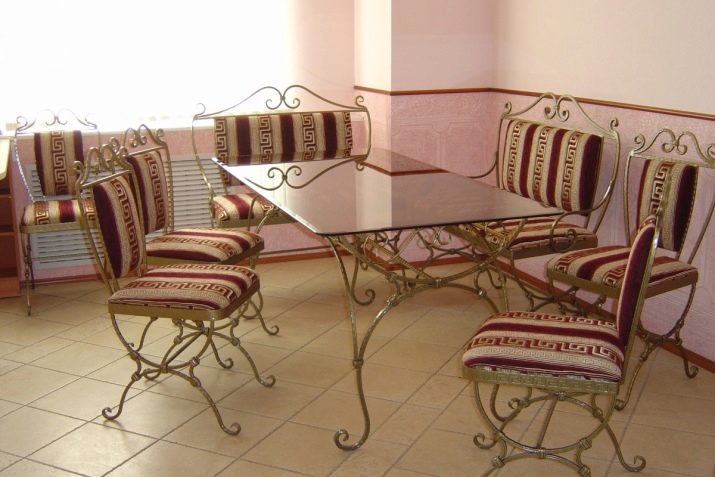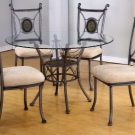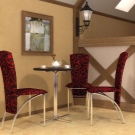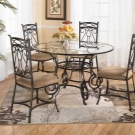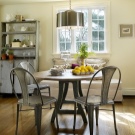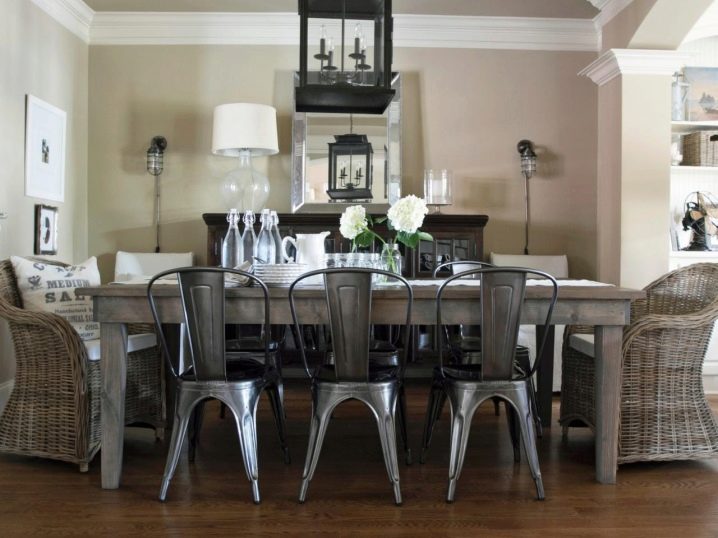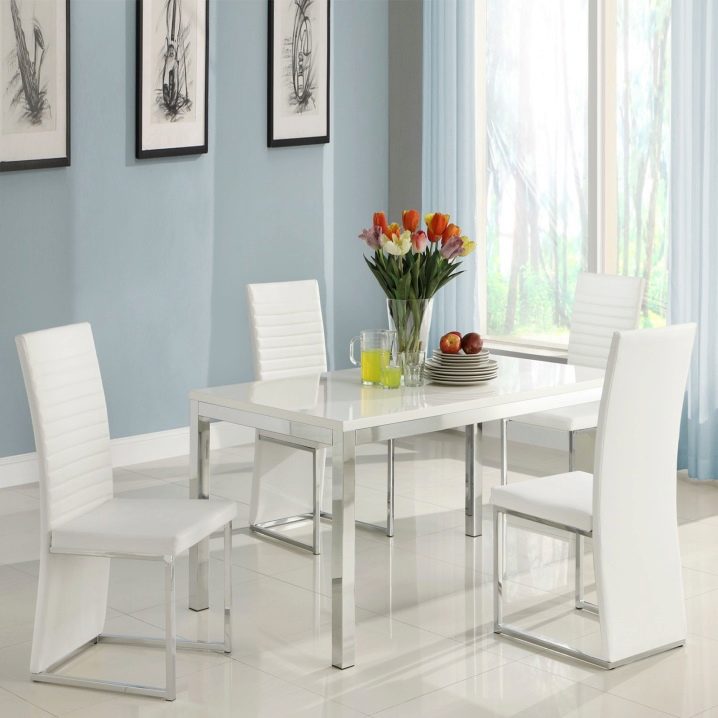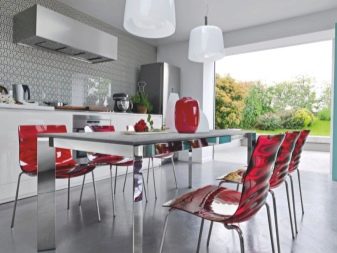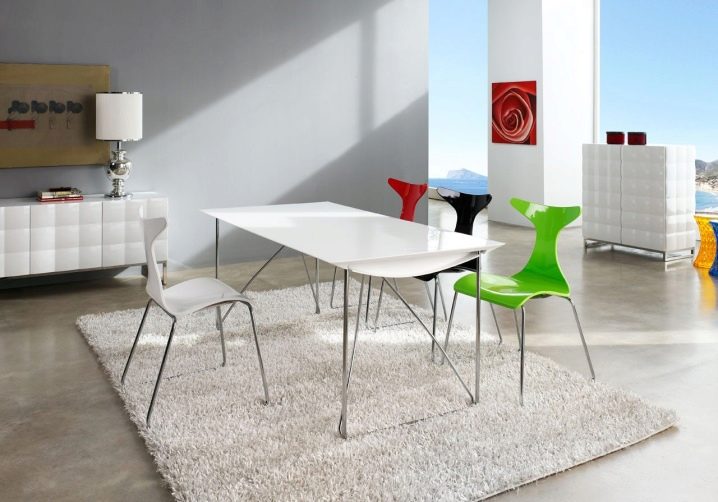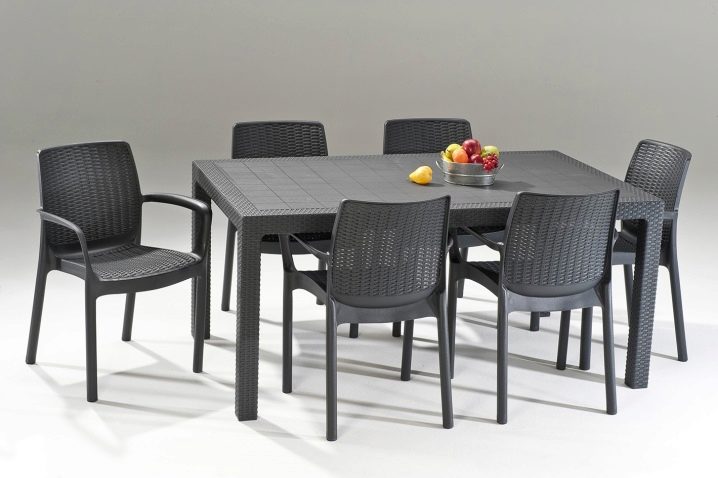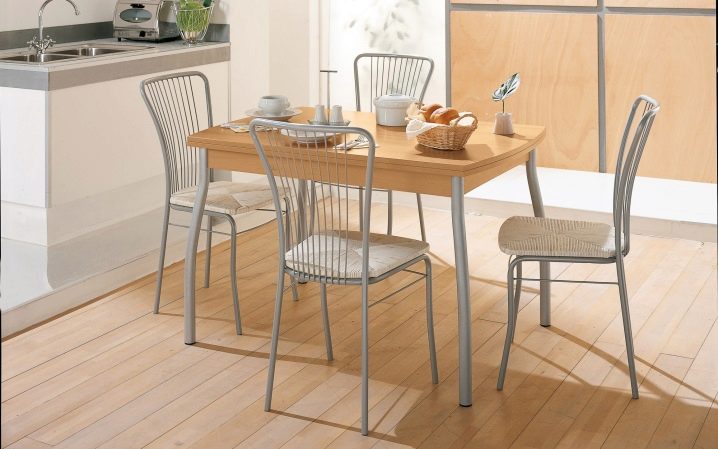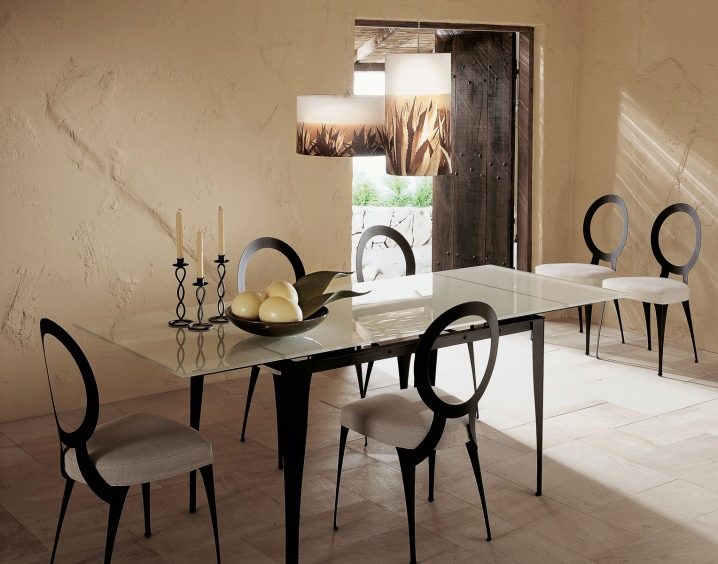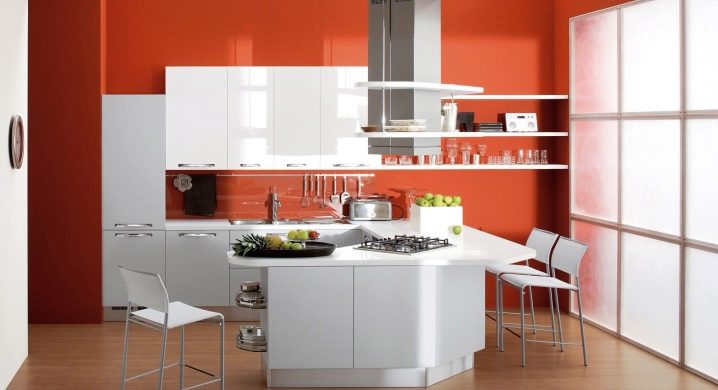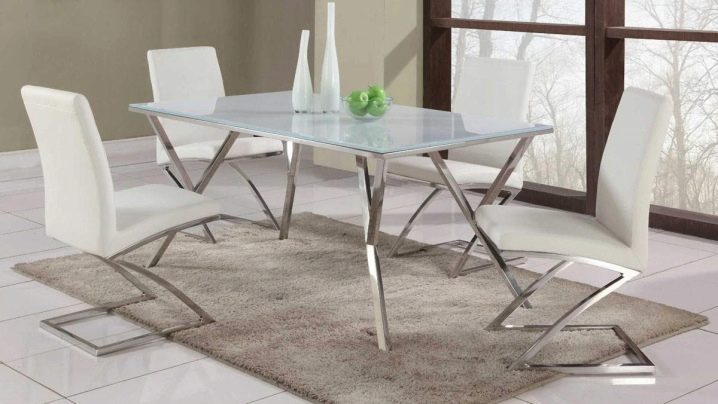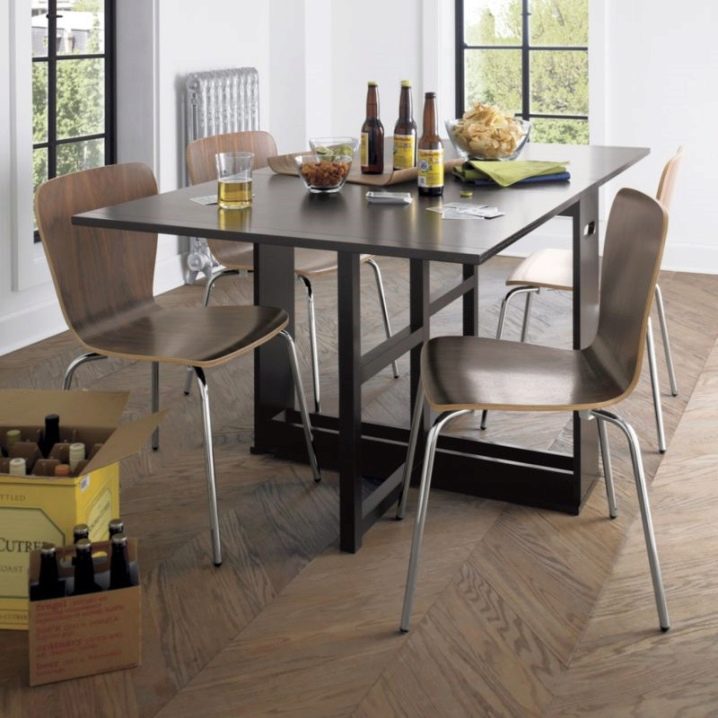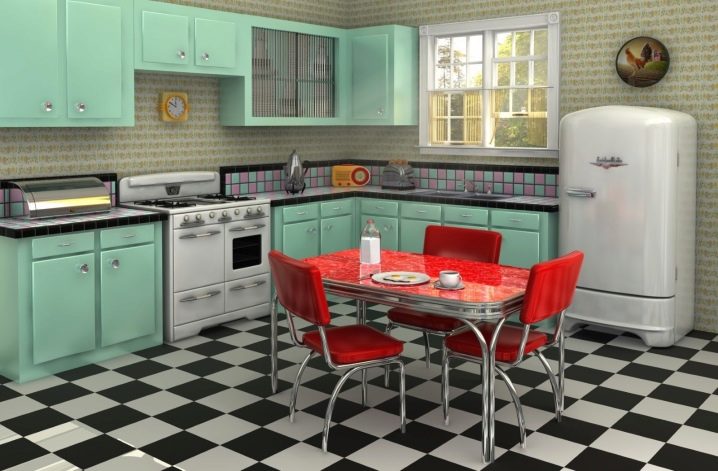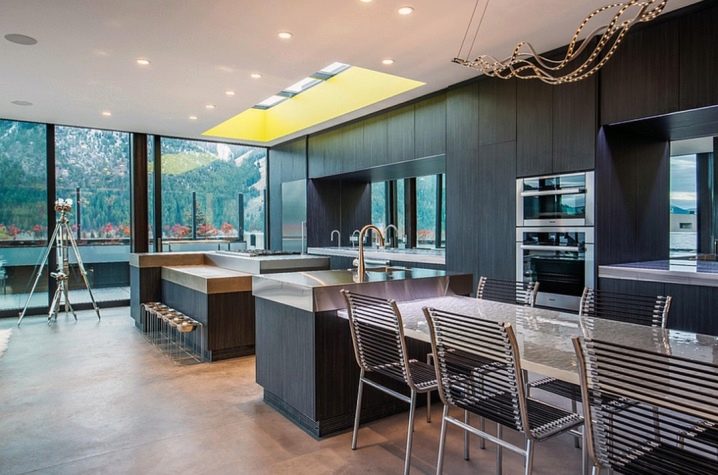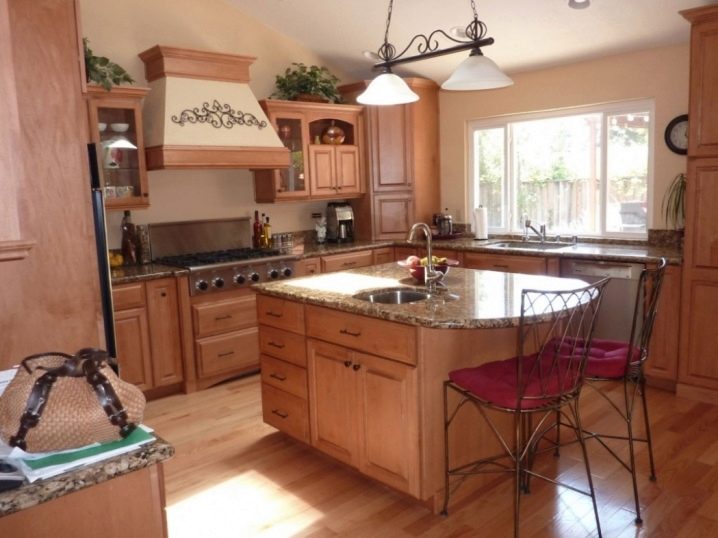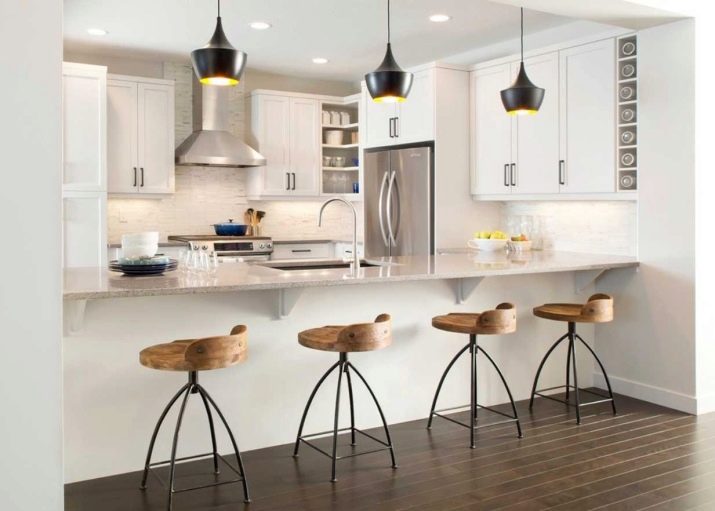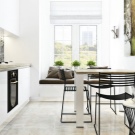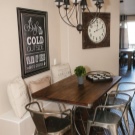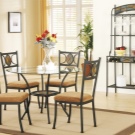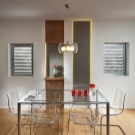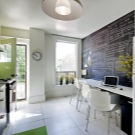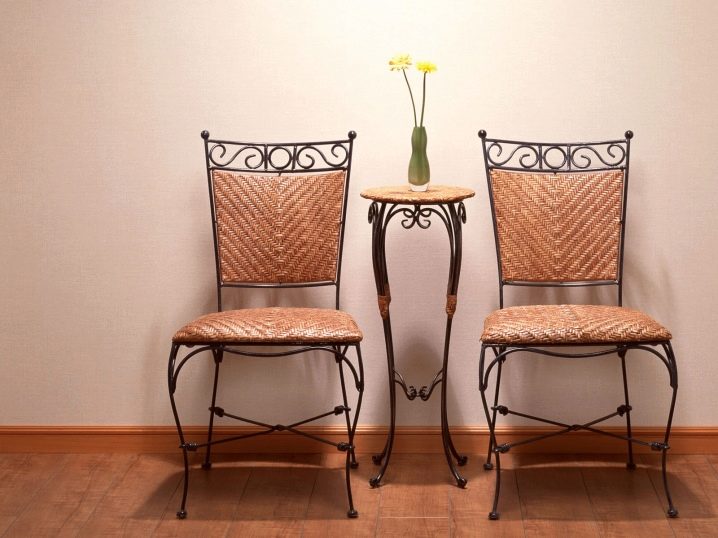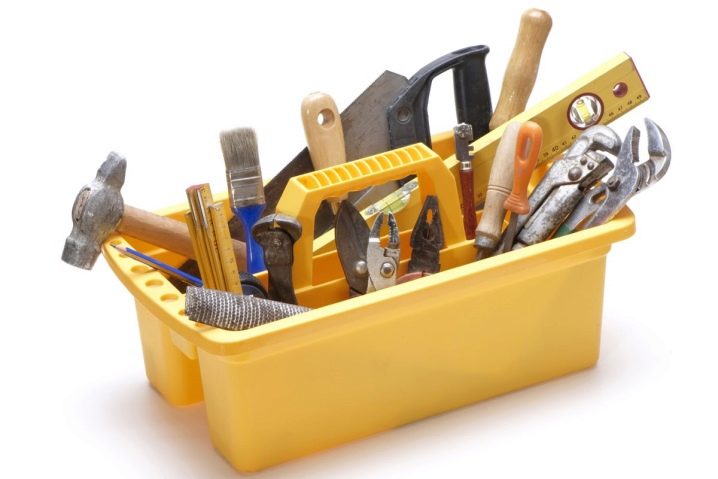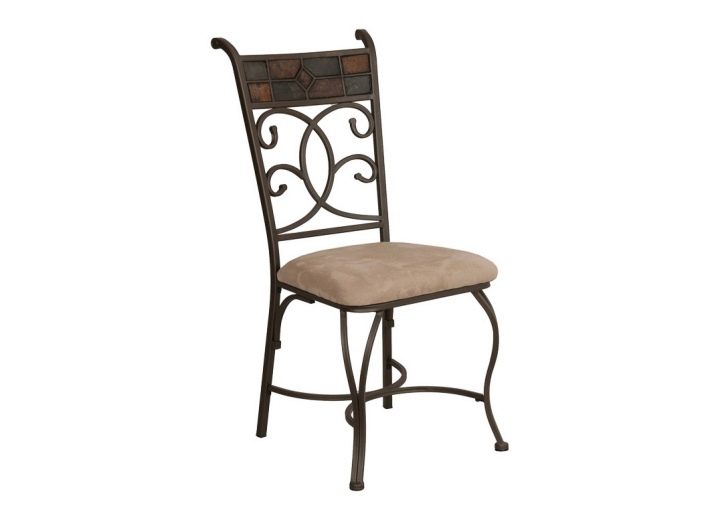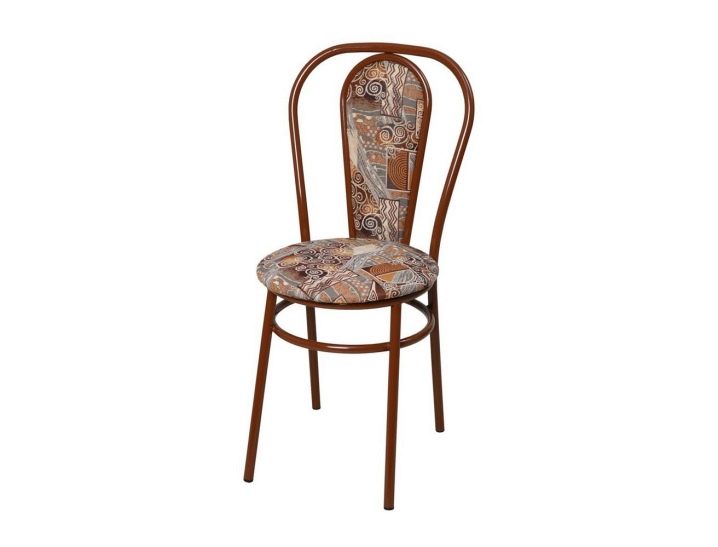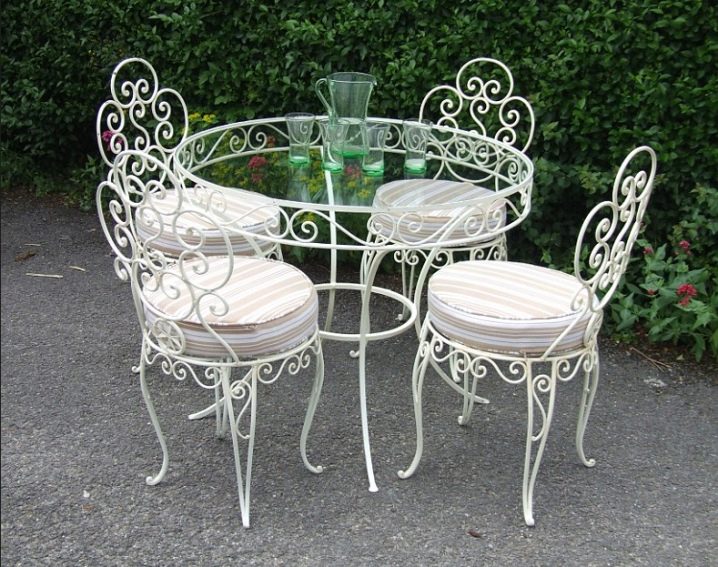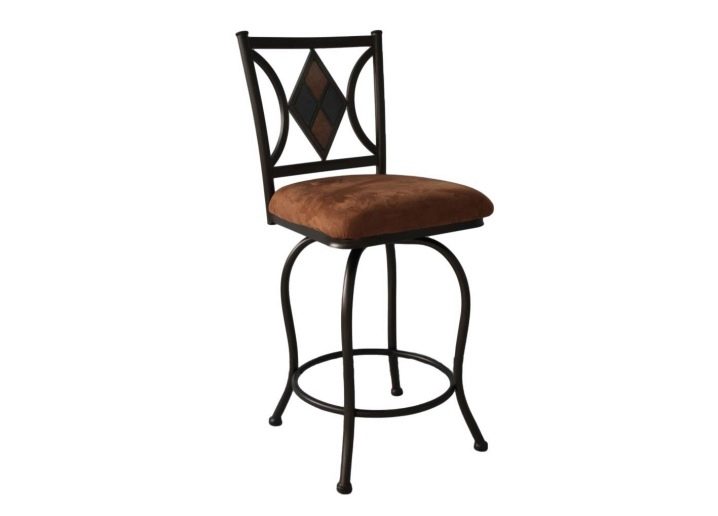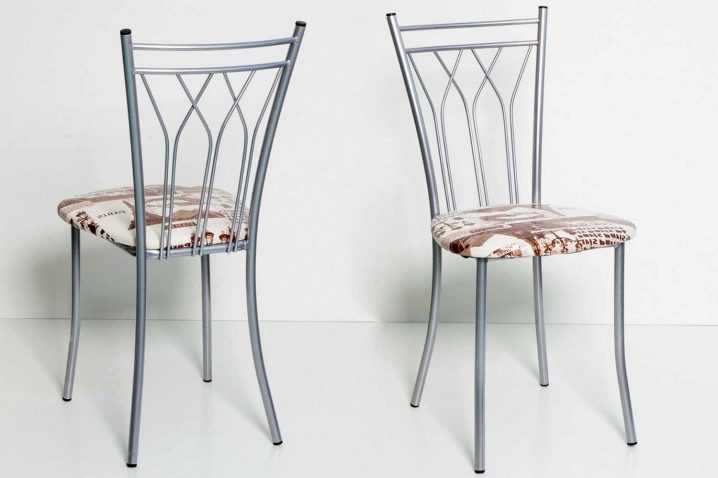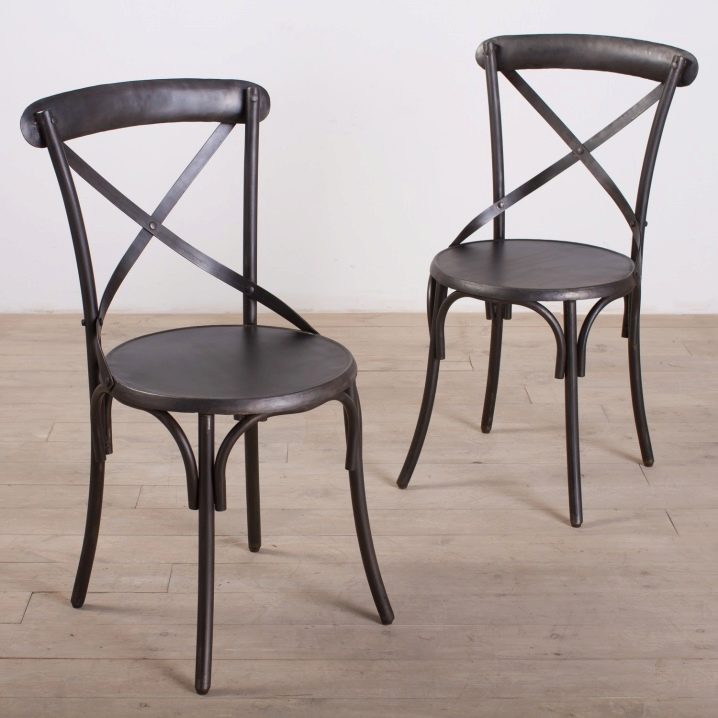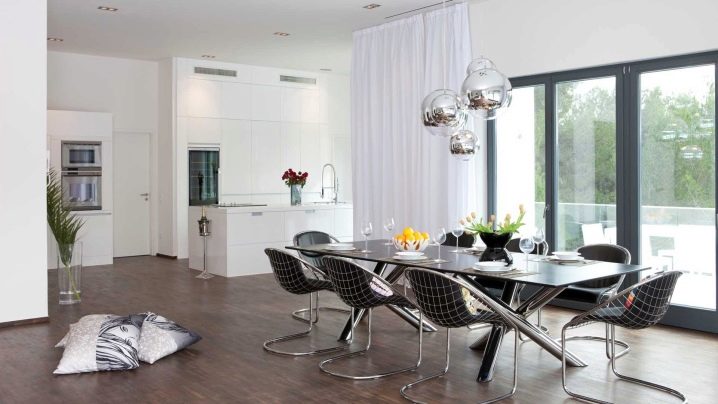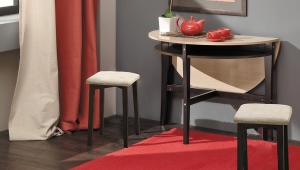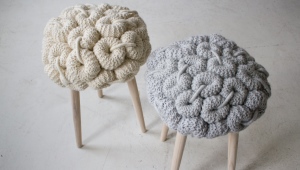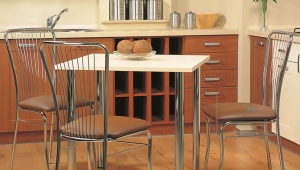Metal chairs for the kitchen
What just do not make furniture for the kitchen today! Metal with wood, leather with plastic, textiles with glass - sometimes even the most unpredictable combinations of materials suddenly become harmonious in kitchen cabinets, tables or chairs. Especially when the main selection criteria are not cost and presentability, but durability and practicality. And in this case it is worth a closer look at the metal chairs for the kitchen.
Kitchen chairs made of metal have an impressive list of advantages:
- high strength - withstand a weight of 150 kg;
- maximum resistance to various influences - they are not afraid of pollution and cleaning substances, high humidity and temperature changes typical of the kitchen area;
- long service life - will last for decades with virtually no deformation and change in appearance;
- excellent wear resistance - metal kitchen chairs do not creak, do not crack and are not loosened;
- possibility of transformation - regulation of height and angle of inclination, folding and folding;
- the variability of the design while maintaining the integrity of the base - if you wish, you can change the cover back and seat, and the material from which they are made;
- ease of care - usually the metal frame is combined with easy-cleaning leather or plastic seat and back;
- aesthetics and reliability - metal chairs are an elegant combination of elegance of the model and its powerful frame;
- the ideal ratio of price and quality - kitchen chairs made of metal is not worse than wooden, but much stronger and much cheaper.
The selection of furniture in the kitchen depends not only on the preferences and financial capabilities of the owners, but also on the overall design and color of the room. And the choice of metal chairs is also based on their size and weight. After all, these objects have to be moved daily, which means they must be not only comfortable, but also light - such as, for example, the popular James or Orpheus models.
Species
Modern manufacturers of kitchen furniture are trying to satisfy almost any needs of their customers and offer thousands of modifications of metal chairs, which, in fact, are divided into only two types:
- soft - made in the form of a solid metal structure, where the seat is filled with soft filler (artificial or natural, with or without supporting springs), which is covered with upholstery made of leather, leatherette or dense matter;
- tough - made of metal frame in combination with various solid materials (plastic, wood, stone, metal).
Both options have minor drawbacks and significant advantages. Upholstered iron chairs are certainly comfortable, but their fabric upholstery quickly absorbs kitchen aromas and is forced through over time, which means it will need to be replaced or repaired. Chairs with hard seats are not so comfortable, but they serve longer and, with their practical and easy-to-clean surface, especially delight those families with children.
Also metal kitchen chairs are classified according to their height and the presence or absence of the backrest and armrests:
- stool - without armrests and backrest, about 45 cm high, freely slides under the table;
- bar - stool with high legs, sometimes with a small back and foot support;
- classical - a chair with a standard depth (52.5 cm) and a width (45 cm) of the seat, a comfortable high back (89 cm), without armrests;
- armchair - more comfortable and at the same time overall chair (due to the presence of armrests and backrest);
- children's - chair with armrests and adjustable seat height and backrest, often equipped with wheels.
In a small kitchen there will be organic stools or folding models of metal chairs. Their seats are usually made of leather or leatherette, at least - of plastic or wood.
Chairs made of metal with a U-shaped frame on the back (solid cast or carved patterns) and plastic seats of bright saturated colors will fit perfectly into the modern urban design of the kitchen space.
As well as those models where the back with the seat smoothly transform into each other, united by a common frame and covered with leatherette with an original print or genuine leather with textured tanning.
The most budgetary and popular model of metal chairs of the Russian manufacturers is the “Harp” - the one that looks like a Viennese with its curved back of metal rods. And the most expensive - design options for elite chrome chairs with a frame of different parts.
The enormous possibilities of combining various configurations and the color of metal chairs will help to create an atmosphere in the kitchen in almost any style and color scheme - even in standard white with elegant backs, even in unusual purple with loop-shaped legs, even with oval carved wooden frames of soft seats and backs in pretentious gold color.
At the same time, kitchen chairs made of metal have one important disadvantage - their iron legs can damage the floors. Although if each of them is “shod” in special rubber or plastic caps, then the floor will remain safe and sound.
Material and quality
The leaders among the manufacturers of metal kitchen chairs are generally recognized by the Italians, the Chinese, who are actively treading on the heels of the Turks, are carefully catching up with them.
The frame of strong and durable Italian chairs Calligaris is always metal, and the seats can be made of wood, plastic or technical polymer.
In Chinese metal chairs, legs are usually made of chrome-plated nickel, plastic and leatherette are dominant in seat materials, upholstered in fabric and natural or eco-leather are used very rarely.
Metal kitchen chairs from Turkey (for example, Balin) with an invariably iron frame and fabric, plastic or kozhzamovye seats and backs can surprise only with a variety, but they are not at all pleased with their durability - Turkish load standards are much lower than generally accepted, and people weighing more than 90 kg can easily break the back of the chair or squeeze the seat. But it is the Turks most often produce folding models of chairs in the set to the same tables.
Russian manufacturers prefer chrome-plated metal for the frame and leatherette for seat upholstery, which guarantees such models not only strength and durability, but also ease of repair.
Design
Italians have long surpassed competitors in the design of chairs - their models of metal and plastic are distinguished by an excellent balance of good taste, style, grace, smooth lines and fine tinting.
In this quite a bit they are inferior to the Russian and Turkish furniture makers, whose shape of the back and the seats of metal chairs is extremely ergonomic due to the perfect fit for the curves of a seated human figure.However, the ubiquitous Russian “harps” in the backs of the chairs of many cafes and restaurants sometimes tire the eyes and aesthetic feelings. And most of the Turkish kitchen chairs made of metal are extremely unified and boring - the steel of the U-shaped frame and the faceless plastic of the seats do not shine with designer delights and practically offer no choice.
The assortment of Chinese metal chairs for the kitchen is perhaps the most diverse - from classic and solid to minimalistic and very colorful.
Price
Perhaps the only thing Russian and Chinese manufacturers of metal chairs in front of the whole planet is in their cost, while the Italian models cannot be called low-cost models, and you should also look for cheap ones among Turkish ones.
Prices for a standard iron chair from Italy start at 10,000 rubles. The average price tag of the Turkish equivalent begins with the amount of 3500-5000 rubles. The cost of Chinese metal chairs ranges from 1,800 to 3,000 rubles per piece. And the widest range of prices is observed among Russian manufacturers - from 1000 rubles for an average metal chair to 5,000 rubles and more for a non-standard model.
How to choose
To find in the store not only beautiful and suitable for the price, but also a comfortable metal chair, you definitely need to “try on” it - that is, just sit on the one you like and evaluate whether it is nice to lean on the back and feel comfortable feet.
Criterias of choice
The main criteria for choosing the right metal kitchen chair are:
Strength
Carefully check all the supporting parts of the chair so that the legs are not too thin, do not disperse, bend or fold.
Weight
A metal chair is not comfortable if it is bulky and heavy - because they have to use it every day. And if it is necessary to transfer it often or move it to another room, choose a light folding model.
Height
The legs of the person sitting on the correct chair are usually bent at an angle of 90 degrees, the feet rest freely on the floor, and the knees do not rest on the tabletop. High or undersized people should prefer a model with the ability to adjust the height and position of the back of a chair.
The form
In a metal chair, the seat depth is 45-55 cm and width is 55-60 cm. At the same time, the edge of the chair should not dig into your legs when sitting - ideally if there is a gap of 5 cm between the fold of your leg and the edge of the seat .For obese people, it is better to pick up chairs wider and deeper and without armrests - it will be more convenient for them.
Care
Special care for metal chairs in the kitchen is not required. Sometimes it is enough to wipe them from dust with a dry cloth and a brush (in hard-to-reach places of bends of the legs or backs) and in time to wash out spilled water or juices and wash away the stains from accidentally caught food or greasy drops. And if upholstered or tired of upholstery, it is easy to replace or restore.
Restoration
Independently to return an attractive look to an ancient or annoying chair with iron legs is not as difficult as it seems. The main thing is that the metal frame is whole and unbending, and the seat can be made new and re-wrapped in the former (if it is not worn out much).
For the restoration of the chair with metal legs will need:
- jigsaw (can be ordinary),
- screwdriver (or screwdriver),
- self-tapping screws
- coarse and fine-grained sandpaper,
- construction knife
- iron,
- PVA glue,
- paint on metal
- sheet of chipboard or laminate film (optional),
- PVC edge (furniture).
First you need to carefully remove from the chair seat, coarse-grained sandpaper to clean the metal frame of the old paint and carefully polish its surface fine sandpaper.
It depends on how smooth the frame is cleaned, how smoothly the paint will fall on it afterwards - it is worth applying it after finishing the grinding and wiping the metal surface with a dry cloth to remove dust.
If an aerosol can is used when painting, it should be kept 20-30 centimeters from the frame to avoid uneven application and paint drips.
It is necessary to dry the painted surface during the day. During this time, you can make a new seat.
If the seat is required to make a glossy, it is better to use a sheet of laminated chipboard and laminate (a convenient roll is sold in the store). For a normal seat, including under the upholstery, the standard chipboard is suitable.
With an electric fretsaw, the base of the seat of the desired size and shape is cut out of the chipboard, and with the help of a construction knife the same pattern is cut out of the laminate, but with a length of 5 mm longer (for fitting when gluing).
Then both blanks are covered with PVA glue (laminate - from the bottom), carefully glued together and left for 12 hours under a press.
After that, the laminate is trimmed exactly in the form of chipboard, their edges are carefully processed with fine sandpaper (null, pasted over with the edge, which for greater reliability is fixed by a hot iron (through the fabric).
It is worth remembering that the adhesive part of the edge layer dries instantly immediately after it cools. And if sticking parts remain after gluing the edges, they should also be cut with a knife.
As a result, the new seat is securely fastened to the frame of the chair and fixed with a screwdriver or a screwdriver on the back side of the screws.
